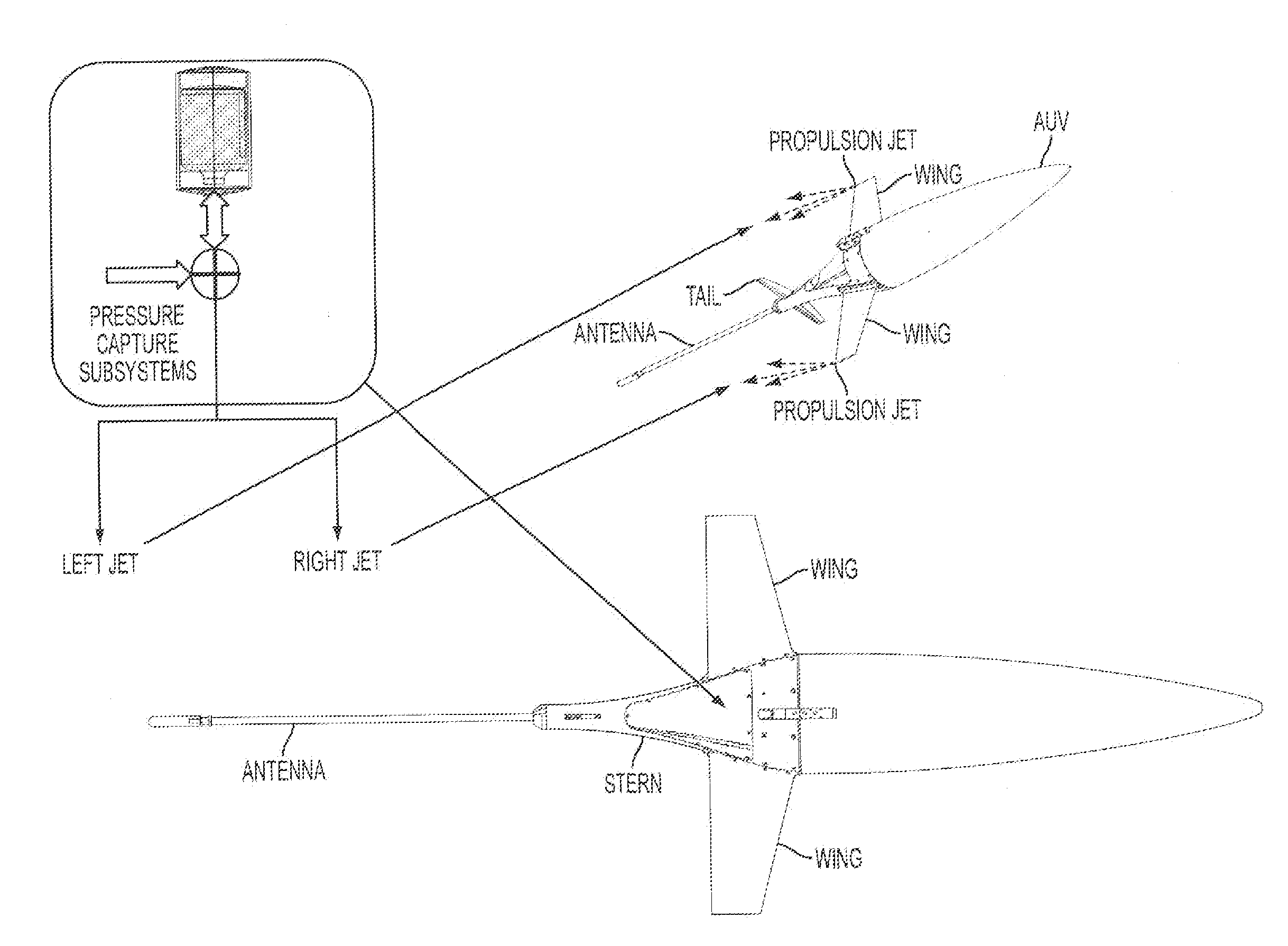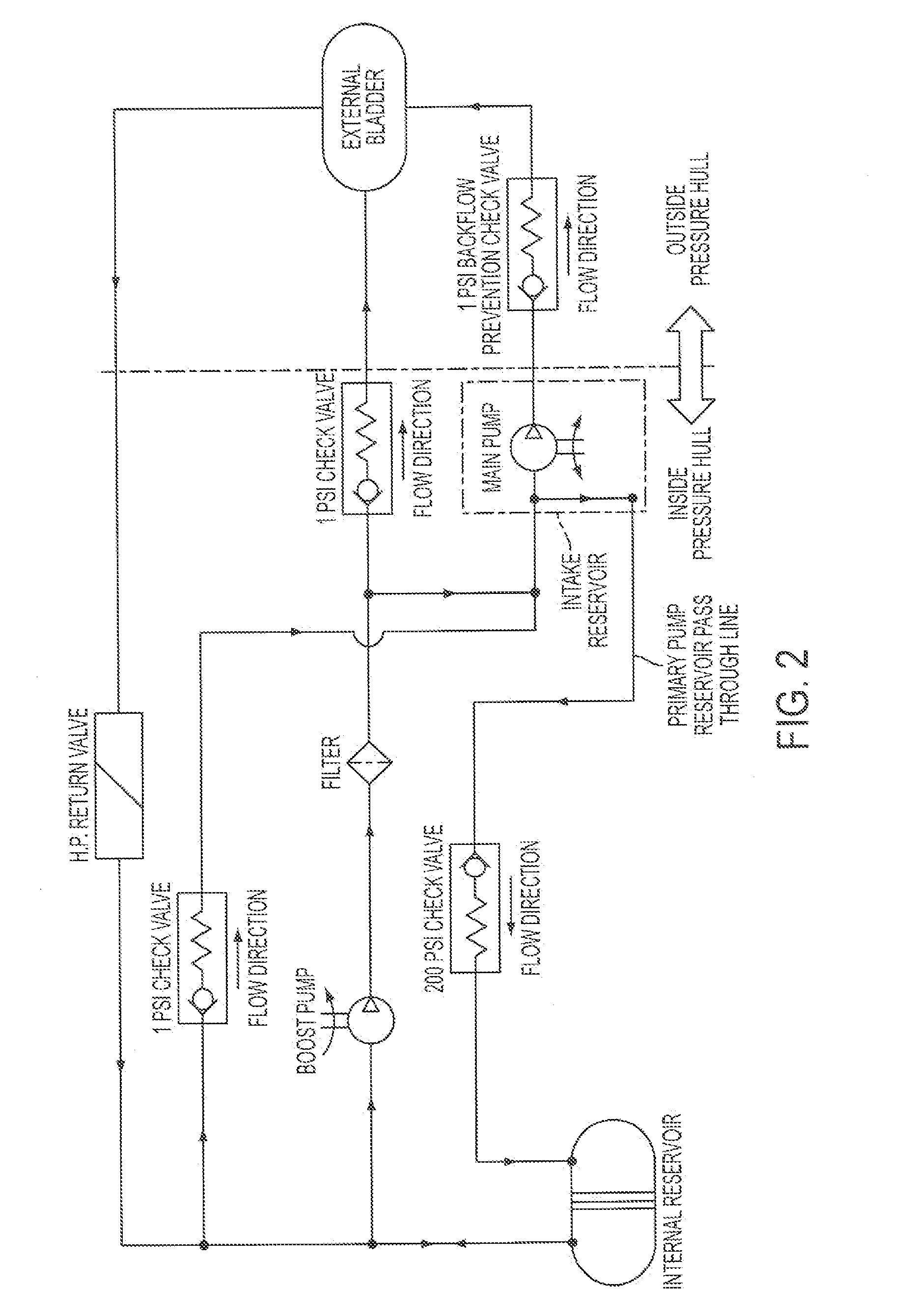Unmanned Underwater Vehicle
a technology for underwater vehicles and underwater vehicles, applied in underwater equipment, special-purpose vessels, vessel construction, etc., can solve the problems of limited energy storage, speed, range, and limited operational scope of current unmanned underwater vehicles, and achieves low logistic deployment, easy launch, and rapid
- Summary
- Abstract
- Description
- Claims
- Application Information
AI Technical Summary
Benefits of technology
Problems solved by technology
Method used
Image
Examples
Embodiment Construction
Air-Deployable UUV Platform for Sensors
[0051]Reference will now be made in detail to the present teachings, exemplary embodiments of which are illustrated in the accompanying drawings. Embodiments of a UUV in accordance with the present teachings can employ methods proven in ocean gliders coupled to small form factor UUV's to provide a system with exceptional duration and mission flexibility. Embodiments of the present teachings that include a substantially “A” sized design will be air deployable using existing sonobuoy launch systems fitted to existing and future airframes or unmanned air systems, allowing rapid, low logistic deployment to various operational locations. Embodiments of the present teachings provide a method to convert the buoyancy and distribution of mass status of a UUV from a status that is efficient at low energy loitering and station keeping to a status that can be propelled either at low speeds for tactical insertion, or at high speeds for pursuit of contacts o...
PUM
 Login to View More
Login to View More Abstract
Description
Claims
Application Information
 Login to View More
Login to View More - R&D
- Intellectual Property
- Life Sciences
- Materials
- Tech Scout
- Unparalleled Data Quality
- Higher Quality Content
- 60% Fewer Hallucinations
Browse by: Latest US Patents, China's latest patents, Technical Efficacy Thesaurus, Application Domain, Technology Topic, Popular Technical Reports.
© 2025 PatSnap. All rights reserved.Legal|Privacy policy|Modern Slavery Act Transparency Statement|Sitemap|About US| Contact US: help@patsnap.com



